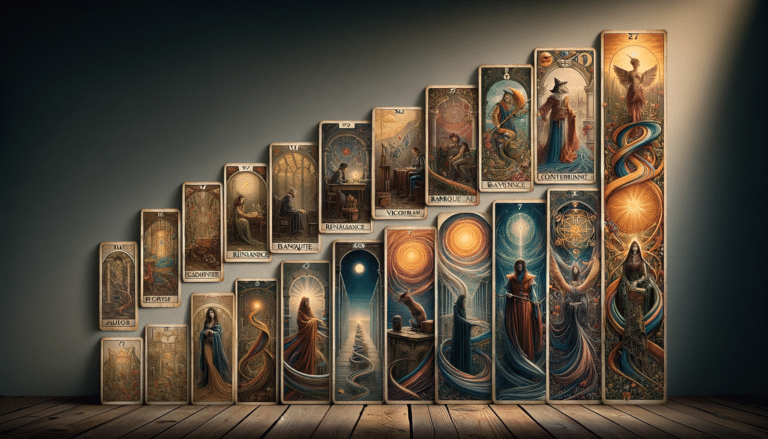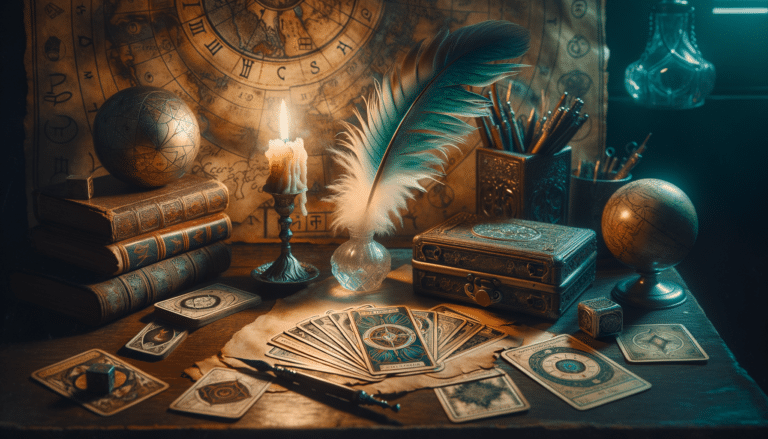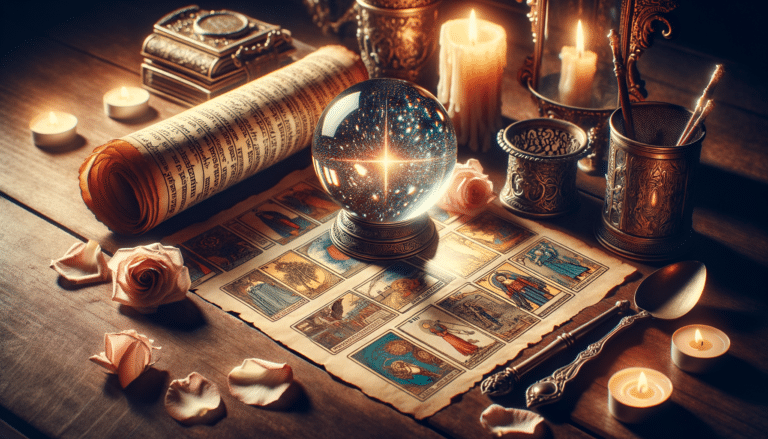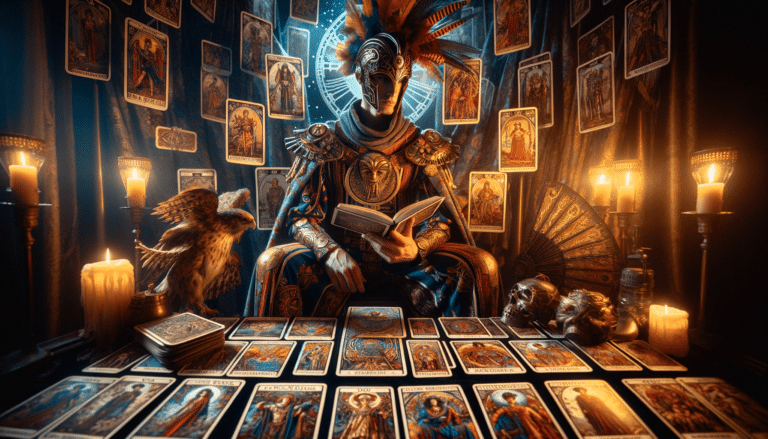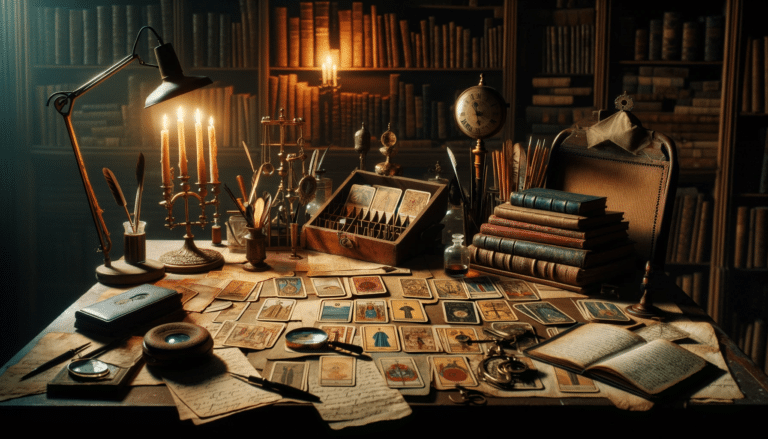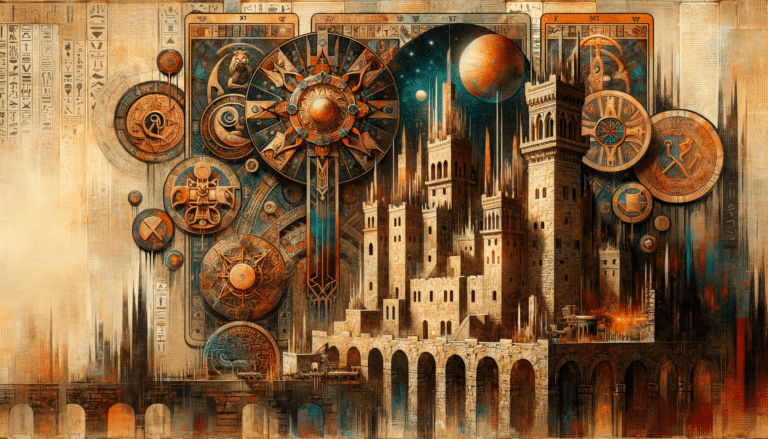The Cultural Significance of Tarot History
Nearly 1 in 7 Americans report that they’ve consulted tarot cards for guidance. You might wonder why this ancient practice still holds sway in the modern world.
The cultural significance of tarot history is a rich tapestry woven with threads from various cultures, symbolisms, and philosophies. Originating in the 15th century, these cards were first used for games in Renaissance Europe before evolving into mystical tools for divination.
As you delve into the symbolism in tarot imagery, you’ll find a mirror reflecting societal values, historical events, and human psychology. Over centuries, tarot’s evolution has been shaped by its intersections with occult traditions, literature, and art, influencing modern culture in ways that are subtle yet profound.
More than just cards, tarot serves as a tool for self-reflection, providing insight into the complexities of the human experience.
Key Takeaways
- Tarot cards have a rich history and cultural significance that dates back to the 15th century.
- The symbolism and interpretation of tarot cards have evolved over time to reflect changing cultural and spiritual landscapes.
- Tarot is deeply symbolic and culturally significant within occult philosophy, providing personal growth and understanding of one’s place in the cosmos.
- Tarot imagery has permeated modern culture, inspiring various art forms and fashion designs, and serving as a tool for self-reflection and personal introspection.
Origins of Tarot Cards
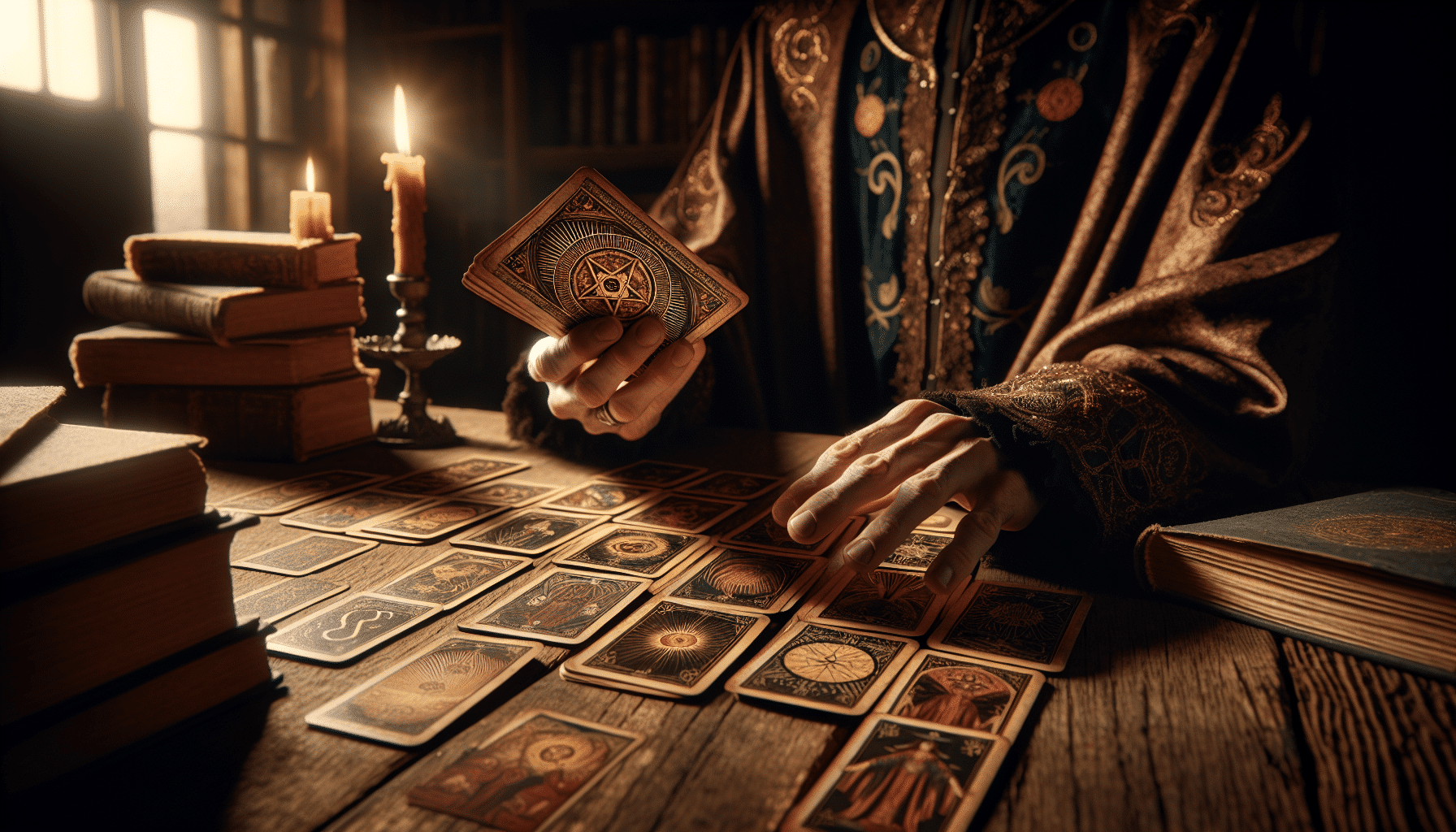
You’ll find the origins of tarot cards deeply rooted in the early 15th century, where they began as playing cards in Europe. Initially, they were crafted for leisure and used in various card games by the upper classes. The standard tarot deck, with its rich symbolism and intricate artwork, was more than just an instrument for gameplay; it was a display of artistic expression and cultural significance.
As you delve deeper, you’ll discover that these decks were used to play Tarocchini in Italy, Tarot in France, and other regional games, each with its own rules and playing techniques. The cards weren’t merely about winning or losing; they offered a social connection and a mental challenge that transcended the game itself. Players had to be adept at strategic thinking and possess a sharp memory, as the complexity of these games often required skillful play and a deep understanding of the deck’s structure.
The allure of tarot cards lies not just in their mystical aura that came much later, but also in their historical role as a medium for social interaction through card games. Their evolution reflects a tapestry of cultural, artistic, and intellectual threads that have contributed to their lasting legacy.
Tarot in Renaissance Europe
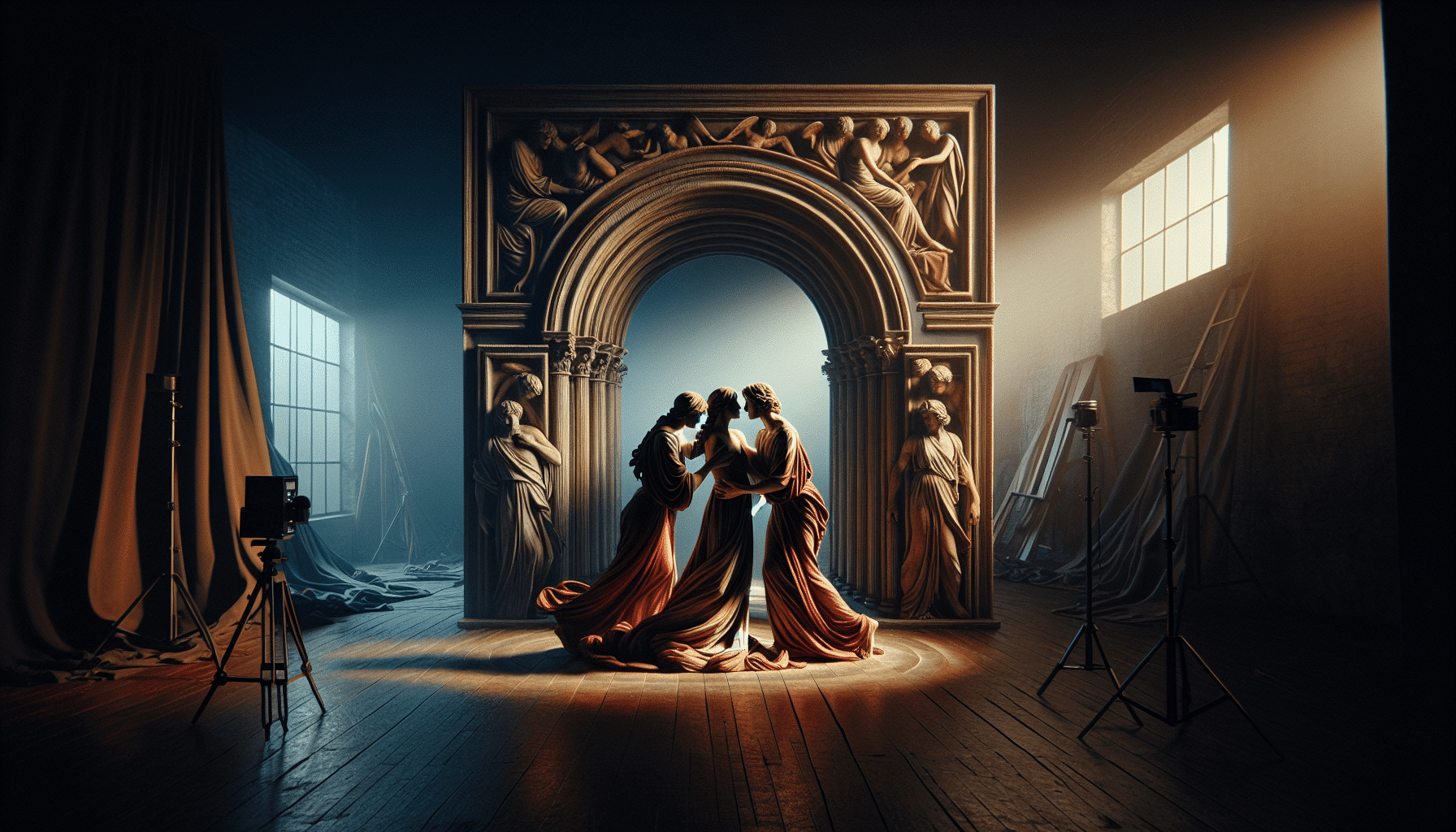
Tarot’s significance burgeoned during the Renaissance, as you’ll see its symbology and artistry reflect the period’s intellectual revival and cultural dynamism. During this era of enlightenment, the tarot’s imagery was richly interwoven with themes prevalent in Renaissance politics and society. The cards served not just as a tool for divination but also as a mirror reflecting the complexities of human experience and governance.
As court entertainment, tarot games were a staple pastime among the nobility. You’d find aristocrats engaged in rounds of tarocchi – what we now know as tarot – using the cards to play various games that were as much a display of social status as they were an enjoyment. These gatherings weren’t merely for amusement; they often acted as subtle arenas for political maneuvering and intellectual discourse.
You’ll notice that tarot decks from this period were lavishly decorated with symbolic illustrations that spoke to the educated elite. The iconography was deeply embedded with allegorical references that resonated with the learned individuals of the time, making the tarot a vessel for the transmission of philosophical ideas and cultural values.
Understanding the role of tarot in Renaissance Europe allows you to appreciate its evolution from a courtly entertainment to a tool for introspection and a treasured historical artifact.
Check out our Tarot Cards here…
Symbolism in Tarot Imagery
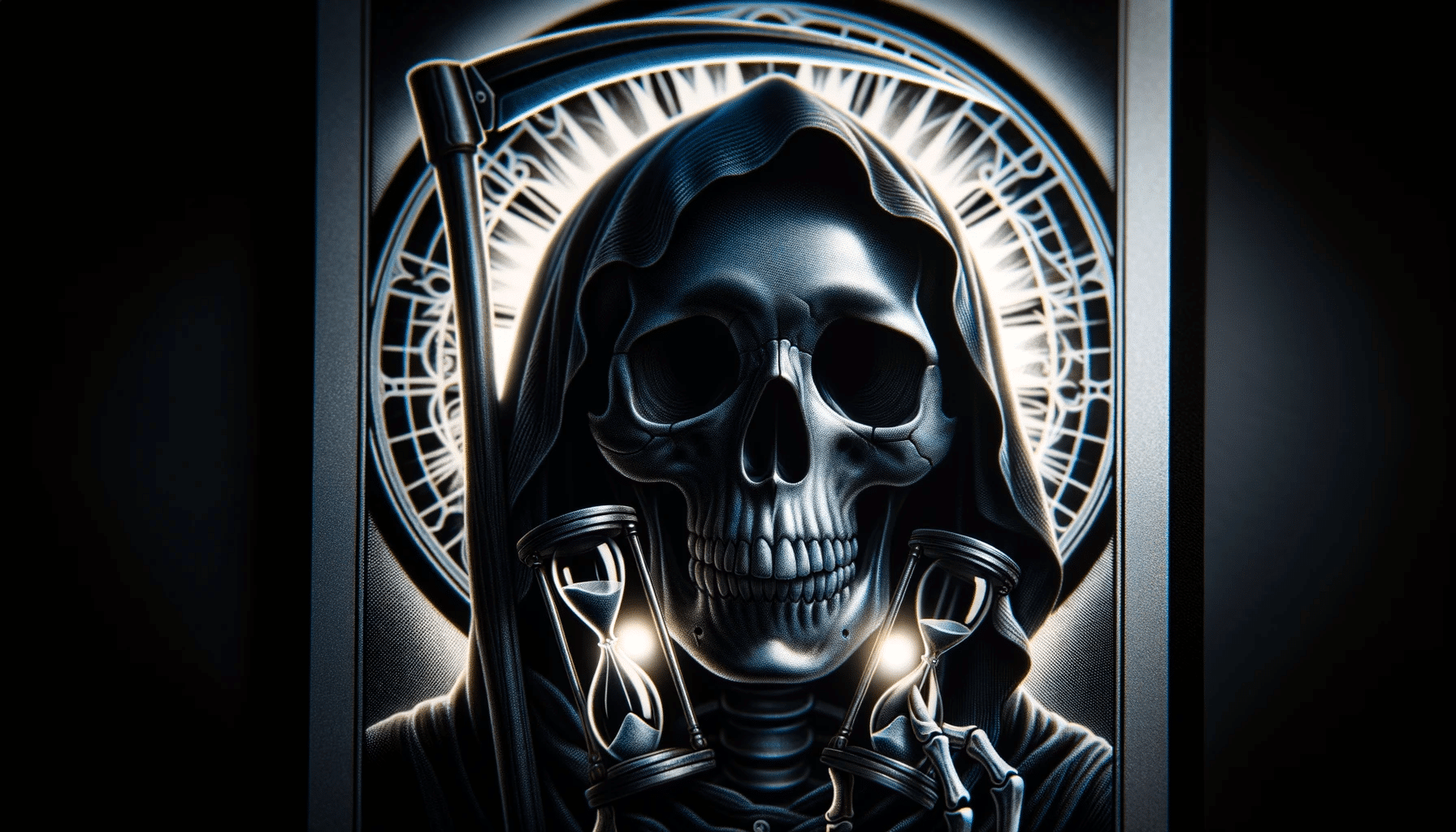
You’ll find that the pictures on Tarot cards aren’t just random; they’re packed with symbols that have deep meanings.
To truly understand Tarot’s cultural significance, you must learn to interpret this visual language and its archetypal iconography.
Each image serves as a key to unlock the card’s story, revealing insights that transcend time and culture.
Archetypal Iconography Analysis
Each of the 78 cards in a tarot deck is laden with symbolic imagery that reflects universal archetypes and offers you a mirror to your subconscious. The iconic relevance of each figure, object, and color taps into the collective unconscious, bridging your personal experiences with broader cultural perceptions.
As you delve into tarot, you’re not just seeing random pictures; you’re engaging with a complex language of symbols that have evolved over centuries.
The imagery in tarot is no mere decoration. It’s a deliberate choice of icons that speak to the human condition – our fears, desires, and moral quandaries. By analyzing these symbols, you learn more than just tarot; you uncover insights into the human psyche and the cultural milieu that shaped these mystical cards.
Visual Language Interpretation
Understanding the visual language of tarot imagery grants you insight into a symbolic dialogue that transcends time and culture. As an interpretative art, tarot cards communicate through a rich tapestry of symbols and motifs, each with its own historical significance and psychological resonance. The imagery on each card isn’t just decoration; it’s a language in itself, revealing the card psychology through visual cues that evoke intuition and personal reflection.
Here’s a simple guide to some common tarot symbols and their potential meanings:
| Symbol | Common Interpretation | Card Example |
|---|---|---|
| Water | Intuition, Emotion | The Moon |
| Lion | Strength, Courage | Strength |
| Tower | Upheaval, Change | The Tower |
| Stars | Hope, Guidance | The Star |
| Sun | Vitality, Clarity | The Sun |
This symbolic framework helps you delve deeper into the cards’ messages, enriching your understanding of their wisdom.
Learn more with these books on tarot here…
Tarot’s Evolution Over Centuries
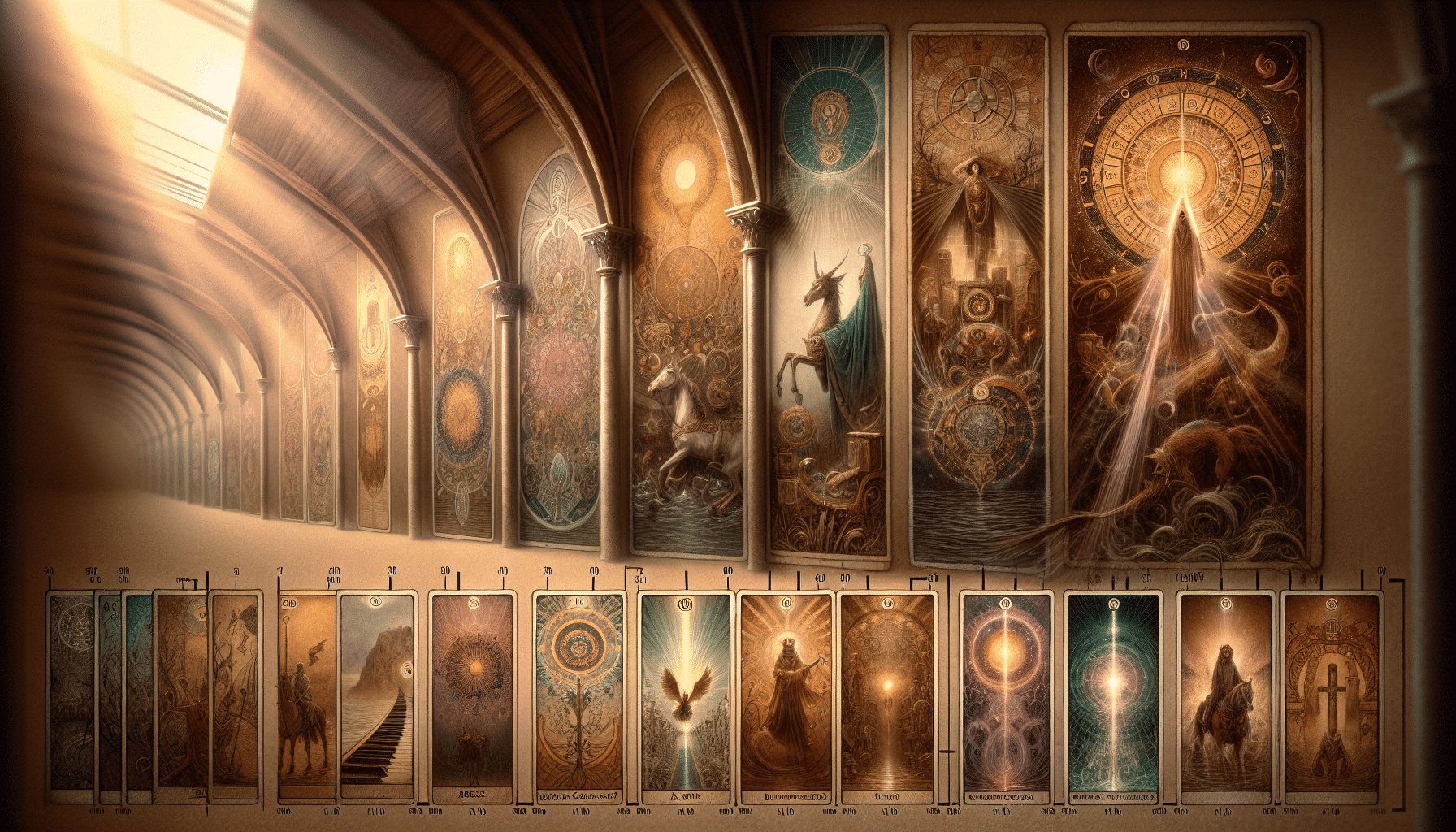
You’ve seen how tarot’s rich symbolism offers a window into the past, but it’s the deck’s transformation over time that truly reflects its cultural significance.
From its origins as a game in the 15th century to its role in modern spirituality, each shift in symbolism and interpretation marks a new chapter in its story.
Now, you’ll explore how these changes chart the journey of tarot from mystic parlors to contemporary life.
Origins and Early Adaptations
Delve into Tarot’s past and you’ll uncover a fascinating evolution that stretches back to the 15th century, with the deck’s initial use in European card games gradually giving way to its role in divination. The imagery on the cards may have been influenced by the allegorical representations found in mystery plays, which were popular at the time. These performances often depicted moral and religious stories that could have provided inspiration for the symbolic artwork of the Tarot. As the cards transitioned to divinatory use, their divinatory roots became more pronounced, yet their true origins remain shrouded in mystery, captivating enthusiasts and scholars alike.
| Century | Purpose | Influence |
|---|---|---|
| 15th | Card Games | Courtly Life |
| 16th | Transition Period | Mystery Plays |
| 17th | Divination Practice | Occult Traditions |
| 18th | Widespread Divination | Enlightenment Ideas |
Symbolism Shifts
As you trace the journey of Tarot through time, you’ll notice how the cards’ symbolism has shifted to mirror the changing cultural and spiritual landscapes.
-
Card meanings
Once a tool for games, the Tarot’s illustrations have deepened, turning simple court figures into profound archetypes. The Fool’s journey, for example, has transformed over centuries from a medieval jester to a symbol of spiritual quests and new beginnings. -
Interpretive practices
Renaissance mystics saw cards as mere entertainment, but modern readers find layers of psychological insight. The Death card, once an ominous sign, is now often embraced as a metaphor for transformation and renewal.
You’ll find these shifts aren’t just historical footnotes – they’re alive in today’s readings, giving you a richer tapestry to explore your own life’s path.
Contemporary Uses, Interpretations
Today’s myriad Tarot practices reflect centuries of evolution, offering you a unique lens to view personal and collective unconscious narratives. Modern enthusiasts often engage in deck personalization, tailoring their Tarot decks to resonate more deeply with their individual experiences and aesthetic preferences. This customization enhances the personal connection between the reader and the cards, enriching the interpretive process.
However, as you delve into Tarot, it’s crucial to navigate the terrain of cultural appropriation thoughtfully. With Tarot’s roots in various cultures and eras, it’s easy to unintentionally co-opt symbols and practices. Always approach Tarot with respect and an eagerness to understand the cultural significance behind the images and traditions you’re drawing from, ensuring your engagement with Tarot is both meaningful and respectful.
Learn even more secrets of tarot history here…
Tarot and Occult Traditions
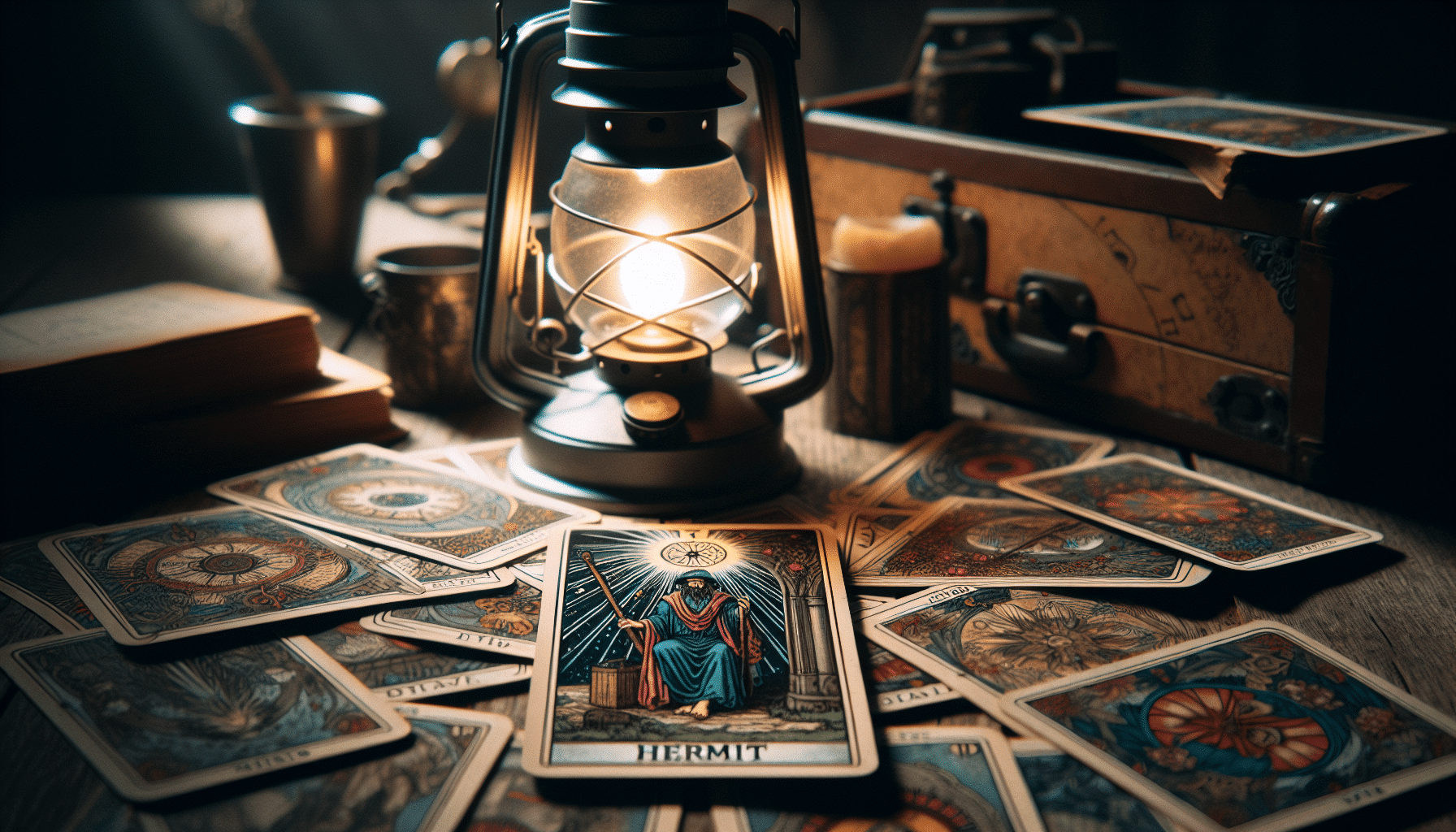
While you might associate tarot primarily with fortune-telling, its integration into occult traditions has deeply enriched its symbolic and cultural significance. These cards aren’t just tools for predicting the future; they’re steeped in esoteric significance, offering insights into the human experience that go beyond the mundane.
As you delve into the tarot’s place within occult circles, you’ll find it’s a key player in a larger narrative of divination practices and spiritual exploration.
Tarot’s Influence on Occult Philosophy
- Reflects universal archetypes and the journey of the soul
Used for personal growth and understanding one’s place in the cosmos
The Emotional Resonance of Tarot Imagery
- Awakens deep feelings of wonder and self-reflection
- Provides comfort during times of uncertainty and change
Tarot’s images and symbols aren’t just random; they’re carefully crafted to resonate with the subconscious, providing a mirror to your innermost thoughts and fears. As you engage with the cards, you’re tapping into centuries of mystical tradition, connecting with the wisdom of countless seekers who’ve sought to understand life’s mysteries through this enigmatic art.
The tarot’s rich tapestry of meaning continues to inspire and intrigue, proving that it’s much more than a simple parlor game.
Tarot in Literature and Art
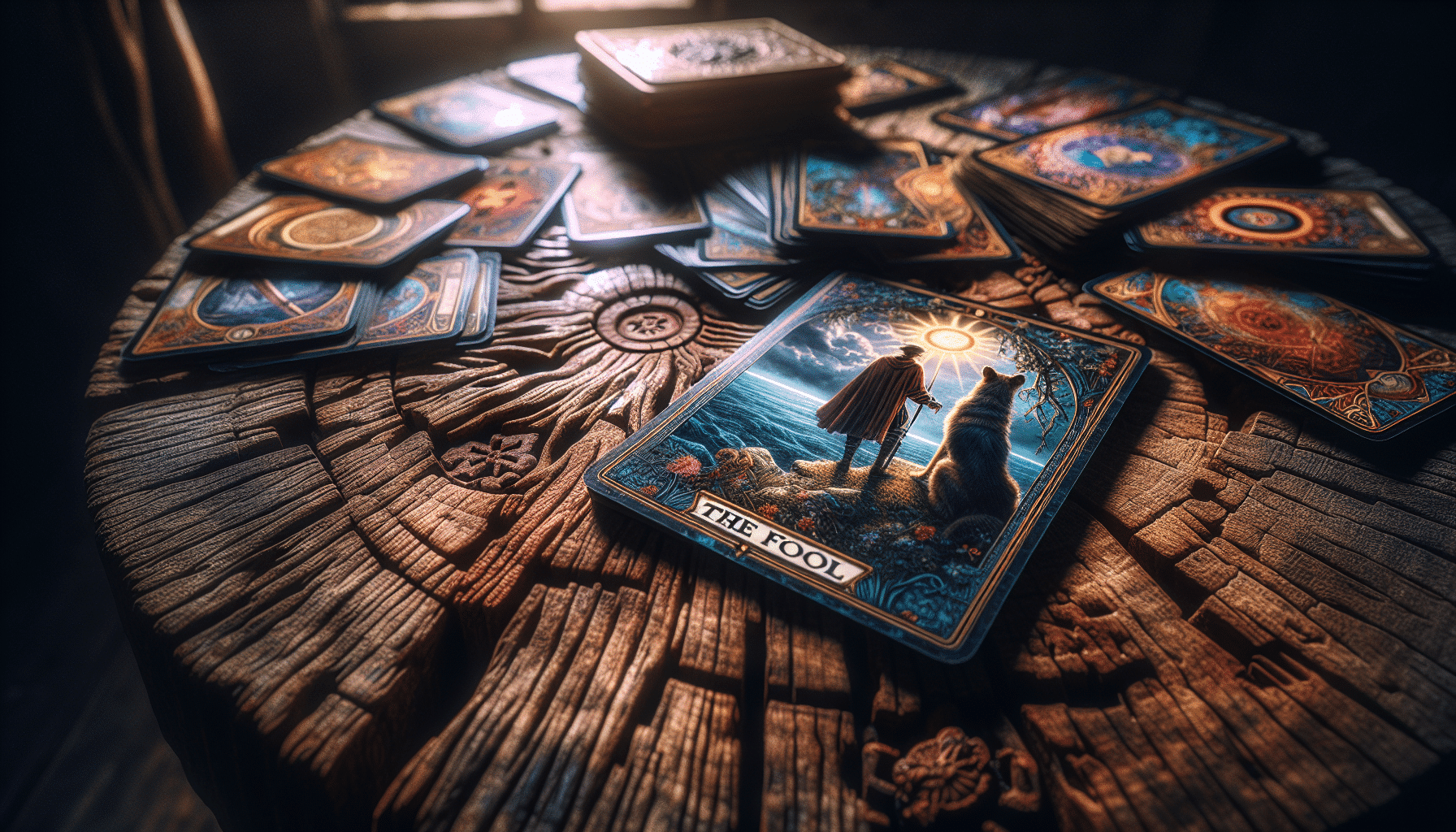
Tarot’s depiction in literature and art reflects your shared cultural fascination with the mystical and the arcane. The card design, rich with symbolic imagery, often serves as a source of inspiration for artists and writers, infusing their works with a layer of depth and esoteric meaning. These images, with their intricate details and allegorical elements, capture your imagination and invite you to explore themes of fate, destiny, and the human psyche.
In literature, tarot’s presence often serves as literary motifs, weaving their way through narratives to enhance the mystical atmosphere of a story or to foreshadow events. Characters might use tarot cards to seek guidance or as a tool for introspection, thereby allowing you to delve deeper into their inner worlds. The Fool’s journey, mirroring the sequence of the Major Arcana, can be seen as a metaphor for a character’s development, representing the archetypal hero’s path.
You’ll find that artists, too, draw upon tarot’s rich symbolism to create works that resonate with universal truths and personal introspection. Whether in paintings, illustrations, or even modern digital media, the tarot’s iconic imagery serves as a bridge between the conscious and subconscious, offering a visual shorthand for life’s complexities and the mysteries that you yearn to understand.
Tarot’s Influence on Modern Culture
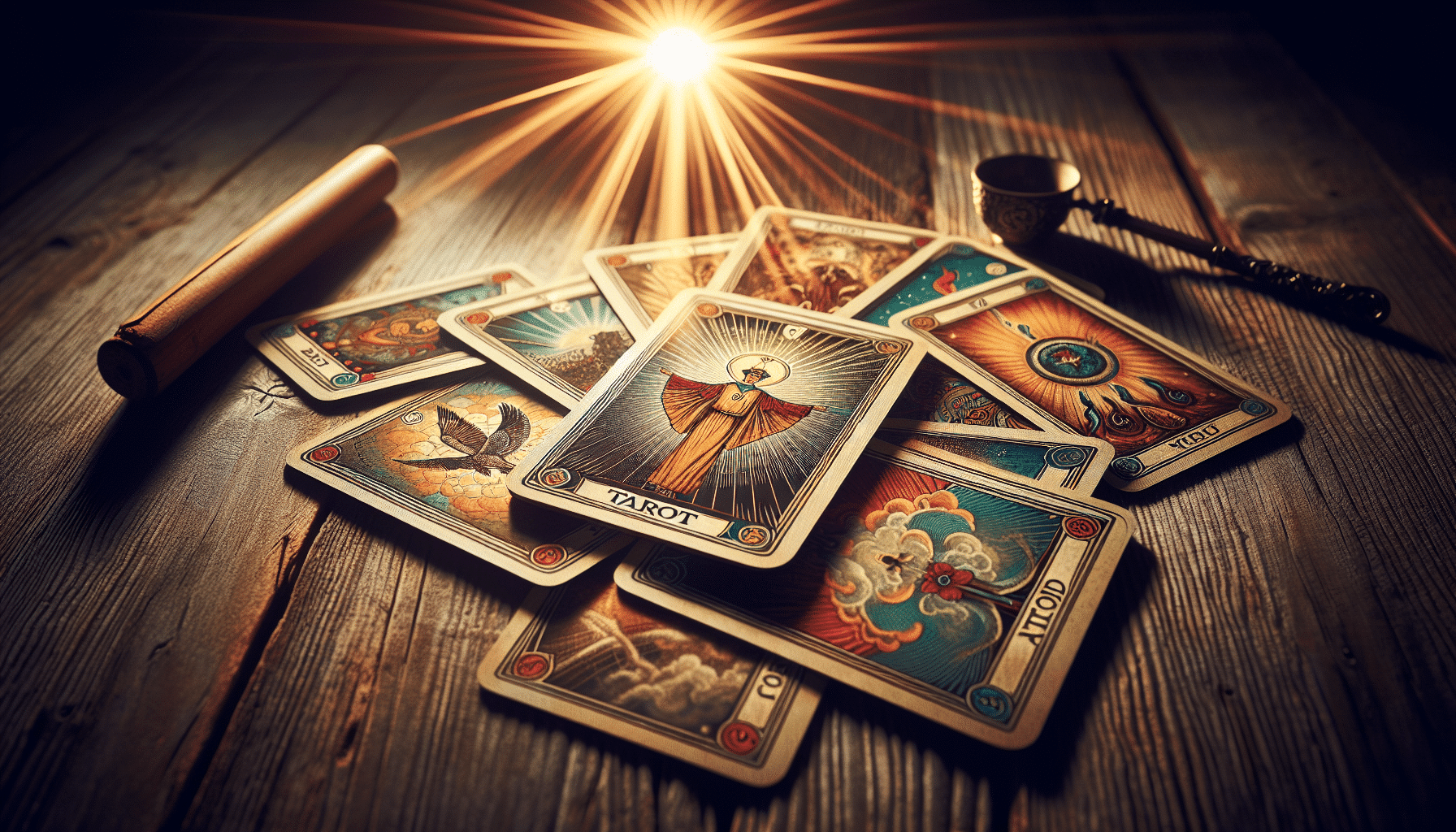
You’ll notice that tarot imagery permeates modern culture, from fashion designs to psychological tools, revealing its enduring impact on contemporary life. The rich symbolism within the cards offers not only a means for introspection and divination but also serves as a wellspring for creativity and expression.
Tarot’s influence in modern culture:
Card Collecting:
- Beyond a hobby, it’s a passionate pursuit for many, collecting decks that range from historical replicas to indie art creations.
- It’s not just about the cards – it’s the stories, the history, and the personal connection that each deck holds.
Fashion Inspiration:
- High-end fashion shows often feature garments adorned with tarot motifs, weaving a sense of mystique into their designs.
- Everyday apparel, too, embraces the tarot trend, allowing you to carry a piece of its enigmatic allure in your daily life.
These facets demonstrate that tarot’s narrative is deeply woven into the fabric of modern society. You might find yourself drawn to the intricate artwork of a deck, or perhaps you’ll feel a connection to the archetypes represented in the cards, resonating with their timeless themes. Tarot’s legacy continues to evolve, yet its essence remains a mirror to the human experience, reflecting our collective unconscious across the ages.
Tarot as a Tool for Self-Reflection
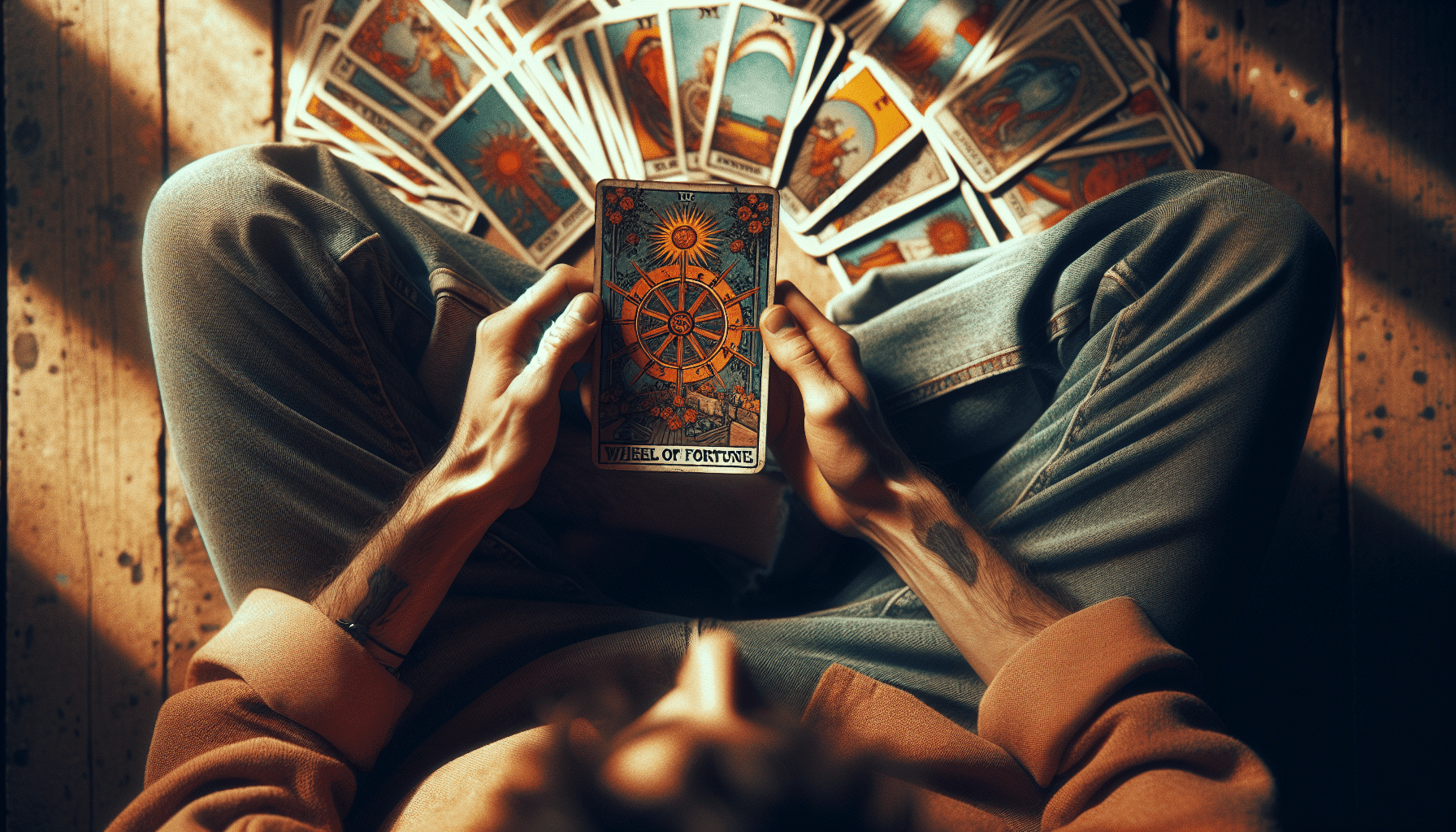
Tarot cards offer you a unique lens for personal introspection, serving as mirrors to your subconscious desires and fears. As you shuffle the deck and draw the cards, you’re engaging in a form of card introspection, where each symbol and image reflects aspects of your life. You aren’t just predicting the future; you’re seeking clarity and understanding of your inner self.
The process itself becomes a ritual, allowing you to step back from the day-to-day and access your intuition. Tarot becomes one of many self guidance mechanisms, empowering you to interpret the cards’ meanings and apply them to your personal context.
To deepen your connection, consider the emotions evoked by the following table of selected cards:
| Strength | The Hermit | The Star |
|---|---|---|
| Courage | Solitude | Hope |
| Inner power | Introspection | Inspiration |
Each card resonates with a part of your psyche, asking you to reflect on your resilience (Strength), your need for inner contemplation (The Hermit), or your capacity for optimism (The Star). This reflective practice encourages a dialogue with yourself, fostering a journey of self-discovery and growth. As you continue to explore tarot’s rich symbolism, you create a personal narrative that guides you towards deeper self-awareness.
Conclusion
You’ve journeyed through the rich tapestry of tarot’s history, from its enigmatic origins to its place in modern self-reflection.
Interestingly, did you know that 3 in 10 Americans believe in the spiritual power of tarot cards? This statistic underscores the enduring allure and cultural significance of tarot history.
Its symbols and interpretations continue to captivate, offering a mirror to our inner worlds and a canvas for our collective imagination.
Tarot isn’t just a relic; it’s a living, evolving story.

About The Author – Allen Hill
Allen Hill, the force behind Unknown Truth Tarot, has a YouTube following 6-times bigger than the population of his hometown, Miamisburg, Ohio. From his spiritually rich blog on Tarot and crystals to his role as CEO of The Unknown Truth Tarot Metaphysical Shop, Allen’s passion for the metaphysical shines through.
A master Tarot reader and “crystal junkie,” Allen is also a devoted dad to Dylan, 10, and Destiny, 24. When he’s not immersed in the world of Tarot and crystals, he enjoys poker and video gaming sessions, often humorously outplayed by Dylan.
Follow Allen on Twitter, Instagram, Facebook, TikTok, and subscribe to his Unknown Truth Tarot YouTube channel to join him on a journey of spiritual growth and self-discovery.

